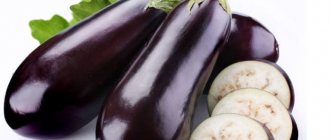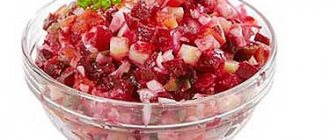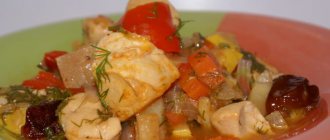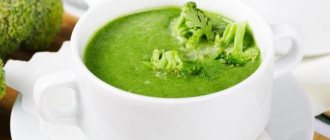Hello, Alexander is here. Today we have a more autumn theme, we will prepare a stew with zucchini and potatoes. Why is it autumn, and because the harvest has finally come to an end, zucchini lies in stacks on the balcony and under the beds, peppers have been removed and partially processed, and potatoes and other root vegetables have been dug up and lowered into the cellar for storage.
Of course, stew can be cooked all year round, we usually do so, but right now, when there is a lot of harvest, we are drawn not to ordinary food, but to experiments. And now there is no need to run around the shops and look for peppers and eggplants, cauliflower and carrots, because everything is at hand, lying and waiting for a very tasty meal to be prepared from this variety.
Therefore, today there will be several options for preparing stew, with different ingredients. And all you have to do is prepare it all, choose the recipes you like most and put them in your piggy bank. And don’t be afraid to experiment with products, because cooking loves creativity.
By the way, since today’s recipes contain zucchini, I propose to prepare a very tasty Korean recipe from them, this is an excellent winter snack. Well, for now let’s move on to the stew and read the recipes.
How to cook vegetable stew with zucchini, potatoes and eggplants
I want to start with a recipe that contains eggplant. It is difficult to overestimate the benefits of the blue vegetable; it is rich in vitamins, healthy acids and indigestible fiber. But now I have no purpose to describe its benefits, it’s better to move on to the recipe and see how to cook a wonderful dish with it.
Ingredients:
- Zucchini – 400g.
- Eggplant – 400g.
- Potatoes – 400g.
- Carrots – 1 pc.
- Bell pepper – 1 pc.
- Onions – 1 pc.
- Vegetable oil – 5-6 tbsp.
- Tomato paste – 2 tbsp.
- Mayonnaise – 3 tbsp. (optional)
- Paprika – 1 tsp.
- Salt – 1 tsp.
- Ground black pepper – 0.5 tsp.
- Garlic – 5-6 cloves
- Greens – 20g. (taste)
We start cooking by preparing the vegetables. We use zucchini from the garden, and this is the last crop harvested before the big cold snap. That’s why the zucchini you see in the photo are very small and their skin is thin and delicate. For example, the smallest weighs only 80 grams. Of course, we don’t cut off any of the skin from them, but if your zucchini is quite large and mature, it’s better to trim it off.
Before adding the eggplant to the frying pan, I tested it for bitterness. All modern varieties that are grown in gardens and sold in stores are free of bitterness, but it’s still better to make sure just in case. If you come across something with bitterness, it’s easy to get rid of it: cut the eggplant into pieces and sprinkle with salt, stir and leave for 20 minutes. Drain off the released juice and you can cook the dish, there will be no bitterness.
So let's get started. As always, we start cooking with onions.
There are two reasons for this: firstly, we don’t like the taste of steamed onions, and secondly, if the onions are fried, they become much tastier. To do this, cut it in any way and send it to a frying pan heated with vegetable oil. Fry over medium heat for about 5 minutes until a light golden crust forms.
Do not skimp on the oil, we will fry all the vegetables in it, besides, the eggplant will absorb it like a sponge, not leaving it for frying. 70-100ml oil will be enough.
At the same time, put a small saucepan with water, into which we send the potatoes, cut into cubes 1.5-2 centimeters in size, to boil. This is a small life hack on how to get vegetables with the same consistency. The thing is that potatoes are so different that they cook until tender from 10 minutes to half an hour. To be absolutely sure that your potatoes will be cooked through and not overcooked, cook them separately. And when ready, add it to the stew.
While the onion is frying, cut the carrots into small pieces, and when the crust turns golden on it, place the carrots in the frying pan. Stir and fry further over a little less than medium heat.
We cut the bell pepper into strips, and as soon as we cut it, we immediately put it in the frying pan, mix and fry everything together.
During the cooking process we don’t wait for anything, we cut the product and send it straight into the frying pan, cut it and send it.
Next we have eggplant. We cut it into plates, then into strips and cut into cube-like pieces, without cutting off the peel.
Then we also put it in the frying pan. Stir and are surprised that the pan has become dry. But it’s not scary, if you don’t have a strong fire, then nothing will burn, just stir occasionally.
After the eggplant, cut the zucchini into the same pieces and add them to the frying pan, mix and close the lid.
Place a small frying pan on the adjacent burner, pour a little oil and lightly fry the paprika, no longer than 30 seconds.
This operation is not necessary, it just makes it taste better.
After frying, add it to the frying pan with the vegetables.
Immediately after the paprika, add tomato paste and mayonnaise into the pan.
Don’t be surprised by the light color of the tomato paste; we have it homemade from tomatoes and pear puree.
You can use any one. Pour a glass of hot water, stir and close the lid. By this time, the stew has been stewing for about half an hour.
In the meantime, we cooked the potatoes. We drained the water from it, and it just stands there and waits in the wings.
At this stage, vegetables should be tested for softness. We like them to be softened and not crunchy on our teeth. If you like your stew with whole vegetables, add the potatoes now. Well, we simmer for a few more minutes. And when the vegetables have softened greatly, add boiled potatoes to them.
Add finely chopped garlic, stir and close the lid.
Simmer for a couple more minutes and turn off the heat. Sprinkle some herbs on top, in this case it’s dried dill, and invite everyone for dinner.
We put it on plates and get rave reviews?
Bon appetit!
Vegetable stew with cabbage and potatoes and zucchini
All the main ingredients are in a deep frying pan and they begin to simmer.
The cabbage turned out to be the top layer, and our roasting pan turned out to be on the edge.
It's okay... When the vegetables are steamed, they will begin to release juice and the volume will decrease by 2 times.
This will be especially noticeable on cabbage. So don't worry about adding a little more cabbage. Cabbage, stewed or fried, is always delicious. And when combined with other vegetables from the garden, it turns out even tastier!
I love the aroma of stew. Stir it after 3-5 minutes of simmering.
Do not cover with a lid, let the excess moisture escape and you will see steam that steams each vegetable in the roasting pan.
Place it in and let it simmer for another 3-5 minutes.
The main thing here is to control the temperature and make sure there is enough liquid.
I don’t add water at first, because the vegetables themselves give off the required amount of moisture.
In any case, we control the process of preparing the vegetable stew, and if we need to add water, we will do it...
Literally after 10-15 minutes, the vegetables have evaporated significantly, and you can see that they have given up almost all the moisture.
At this stage, it is important to watch so that the dish does not start to burn.
If necessary, reduce the heat...
Now is the time to add the rest of the ingredients and start adding more seasoning.
We start with tomato paste. It turned out to be 4 tablespoons.
If desired, you can add a little less and then taste it.
By the way! At this stage, I had to add water. Literally 150 grams.
Stir the stew again and add the greens.
For us it is parsley and dill. Just a sprig of parsley so that it doesn’t interfere with the taste of the vegetables. And a small handful of dill, as shown in the photo.
We send garlic on a fine grater to our vegetable friends...
Salt and pepper to taste!
Just look what happens.
And to taste - all the colors of summer.
For those who like it spicy, I recommend adding 5 drops of Tabasco.
The taste had a warming aftertaste. Not too spicy!
Vegetable stew is ready!
I'm running to take pictures to share with you.
In the first photo, which is at the very beginning of the recipe, you could have added a yellow leaf on the right side, thereby highlighting the dish.
But now everything is green, and it’s summer outside. Therefore, let it be as it is! Although, if you add a yellow tint, you get that golden autumn effect. In any case, the recipe turned out to be a 5 plus. Delicious and satisfying stew. I recommend it for you and your loved ones.
If you liked the recipe, click class. I will be grateful for any response.
I wish you bon appetit, and see you again. It turned out very tasty. Prepare yourself...
0
Author of the publication
offline 54 minutes
Vegetable stew with zucchini, cabbage and potatoes
Let's carve out 40-50 minutes of time - that's how long it takes to prepare the next stew recipe, to which instead of eggplant we will add fresh white cabbage.
Ingredients:
- Zucchini – 1 pc. (400g.)
- Potatoes – 6 pcs.
- Cabbage – 0.5 head (400g)
- Onions – 1 pc.
- Carrots – 1 pc.
- Tomato – 1 pc.
- Salt - to taste
- Ground black pepper - to taste
- Garlic - to taste
- Vegetable oil - for frying
- Water – 1 tbsp.
We start cooking with onions. This is the best in terms of extracting flavor from it. To do this, chop it finely and place it in a frying pan heated with vegetable oil, stir and leave to fry. Meanwhile, cut the carrots into small pieces. As soon as we cut the carrots, put them directly into the frying pan with the onions, stir and continue frying for 5-10 minutes.
Next, add the garlic, cut into slices, into the pan.
While the vegetables are frying in the pan, cut the potatoes into small cubes and add to the pan. Stir and fry further. We don’t wait for anything, we just cut up the next product and add it to the pan.
Now we cut the zucchini. We try to cut the zucchini into pieces the size of potatoes or a little smaller. But this is a conditional rule; it is better to stick to your preferences.
After cutting, put them in a frying pan and continue frying everything together. Stir occasionally.
While we were cutting everything and adding it to the pan, some of the vegetables had already softened, which was good. Pour a glass of boiling water, close the lid and simmer further under the closed lid.
And while everything is stewing, prepare the cabbage. To do this, cut it into thin strips and place it in a deep bowl. Add some salt and knead thoroughly with your hands until the juice comes out.
Let me clarify - with a woman’s hands, if a man does this, the main thing is to stop the process in time so that the cabbage does not turn into mush?
When the cabbage is mashed, immediately add it to the pan with the vegetables. Stir and continue simmering.
Peel the tomatoes, cut into small pieces and place in a frying pan. Mix everything again and continue to simmer the stew.
The skin of a tomato is very easily removed if you make a small cross-shaped cut on the tomato, at the end opposite from the stalk, and pour boiling water over it for 30 seconds. Then drain the boiling water, and the skin can be easily removed. Is it possible not to remove it? Yes, of course, you can, it’s just that in stews the skin is often separated from the pulp and is, so to speak, free floating, which does not decorate the stew in any way. And it’s not interesting to chew, it’s quite hard and tasteless.
We return to the pan and check the readiness. All ingredients should become soft.
If you don't like a thin stew, simmer uncovered in a frying pan to allow the moisture to evaporate. If, on the contrary, it’s juicy, don’t open the lid, and you can even add a little more water.
Now pepper the stew and add salt (some of the salt was with the cabbage). Mix and try again. If everything is satisfactory, turn off the heat and place on plates. All that remains is to call the household.
Bon appetit!
Stewed cabbage with zucchini - a simple universal recipe
Usually cabbage is stewed with meat/sausages or mushrooms. But why don't we deviate from the accepted dogma and make this dish with zucchini? It is made simply and quickly - in half an hour even a novice cook will have a delicious light vegetable stew. Stewed cabbage with zucchini is a universal dish. It can be prepared from a young green head of cabbage in both summer and winter. Both fresh and sauerkraut are suitable. And the stew is equally tasty to eat both hot and cold. And the cooking methods are countless. Let's look at just a few.
Stewed cabbage with zucchini and tomatoes
We chop one medium head of cabbage, chop two carrots on a grater, and cut the onion into half rings. Remove the seeds from one large zucchini; if it is old, peel off the hard skin. Cut the pulp into large cubes. Scald three tomatoes and remove the skin. Cut the tomatoes into slices. Pour a little water into the cabbage, which should be three times larger than zucchini, and put it on low heat under the lid for ten minutes. Meanwhile, fry the onions and carrots in sunflower oil until golden brown. Combine the sauteed vegetables with cabbage and continue cooking for about 10 minutes. Add zucchini. They will release juice, and this is good - there will be something to stew in the dish. Let the stew bubble for another ten minutes, then add the tomatoes, bay leaves, spices and salt. Let simmer for another ten minutes. Stewed cabbage with zucchini needs to sit a little to fully develop its flavor.
Winter recipe
You can use sauerkraut for this dish. Only if it is very “vigorous”, you need to soak it in cold water for a while. Cut two zucchini or zucchini into small strips. You don't have to remove the skin. Grind a clove of garlic in a mortar or press under pressure. Place the zucchini in a deep frying pan and add a little salt. Let's start heating. The released juice allows us to stew without adding fat, so the dish will be more dietary. Add garlic and continue cooking with the lid on. Place the washed cabbage in the pan. Keep covered for another quarter of an hour. We do not allow violent boiling and burning. Stewed cabbage with zucchini is considered ready when the vegetables become soft. If you have a homemade product like tomatoes in their own juice, it’s good: strain out a few, chop, add to the frying pan. If not, you can use ketchup or tomato paste. You can add a spoon or two of sour cream at the end.
Stewed cabbage with zucchini: a quick recipe
Sauté the onion, add diced zucchini to it, salt and season. Simmer covered for five minutes. Three carrots, chop the head and mash it with your hands. This will allow the cabbage to cook faster. Add the vegetables to the zucchini and continue cooking, covered, for about fifteen minutes. Sprinkle with suneli hops and pour two tablespoons of mayonnaise. So let it sit under the lid for another five minutes.
Stewed cauliflower with zucchini
Cut the carrots into slices and sauté in vegetable oil in a frying pan with a thick bottom and high sides. Wash the cabbage, separate it into florets, add to the carrots, and fry for five minutes. Cut the zucchini into cubes, place in a frying pan, sprinkle with barberries, cumin, turmeric, and black pepper. Stir and simmer, adding a little water, for about twenty minutes. When the ingredients of the stew become soft, sprinkle the dish with chopped fresh herbs and keep on the fire for another five minutes.
Zucchini stew with potatoes and cauliflower
We have mastered the recipe with white cabbage. Now let's replace it with a colored one and return the eggplants. Mmm, I can already sense the wonderful taste of the stew. I won’t bore you, let’s move on to the recipe.
Ingredients:
- Zucchini – 1 pc. (400g.)
- Eggplant – 2 pcs. (400-500gr.)
- Tomatoes – 3 pcs.
- Bell pepper – 2 pcs.
- Cauliflower – 1 kg.
- Potatoes – 4-5 pcs.
- Onions – 1 pc.
- Carrots – 4-5 pcs.
- Garlic – 2-3 cloves
- Salt - to taste
- Ground black pepper - to taste
- Sugar - to taste
- Vegetable oil - for frying
Wash the eggplants and remove the stem. Cut lengthwise into halves and then cut into small cubes.
If suddenly your eggplants are bitter, although modern varieties are grown and sold without bitterness, sprinkle the cut pieces with salt, stir and let stand for about 20 minutes. Drain off the juice that is released, and use the eggplants for cooking.
Cut the onion into thin rings or small pieces and place in a frying pan heated with vegetable oil.
Do not skimp on the oil; it should cover the entire bottom of the pan; we will simmer all the vegetables in it.
Cover the pan with a lid and turn the heat to no higher than medium. The onion should simmer rather than fry. Meanwhile, cut the carrots into small pieces and add them to the onions. Stir, close the lid again and leave them together for 10 minutes.
During this time, cut all other vegetables. Cut the zucchini into pieces approximately 1.5-2 cm in size.
If the zucchini is young, do not cut off the peel, otherwise it may become very limp during stewing, and you won’t even notice it in the stew.
Cut the potatoes into pieces slightly smaller than the zucchini.
Cut the pepper into pieces the size of potatoes.
Let's move on to cauliflower. It is better to remove the inner stalk; we will use only the inflorescences, which we cut into arbitrary pieces.
If 10 minutes of stewing the onions and carrots have passed, add eggplants to them, salt, mix and fry with the lid open for 5-6 minutes. We make the fire no more than medium.
While everything is fried, cut the tomatoes. It is advisable to remove the peel. And after 5 minutes, throw them into the pan and mix. Close the lid and simmer for another 5 minutes.
After the time has passed, add all the other chopped vegetables to the frying pan and mix well. Add salt again, add a teaspoon of sugar and close the lid. We continue to simmer further.
When the total stewing time for the stew is approximately 30 minutes, you can already taste the vegetables to see if they are ready. And if they're almost done, it's time to add the garlic and pepper. To do this, cut the garlic into small pieces and throw it into the pan. Pepper to taste on top, close the lid and simmer until done.
Tip: chop the garlic either finely or coarsely, because children sometimes pick it out of the plate, and if the garlic is chopped coarsely, this is easy to do. But if you cut it finely, then there is every chance that they won’t notice it at all?
That's all. Bon appetit!
Vegetable stew with potatoes and stew
In this recipe you can use any vegetables of your choice, as well as fruits.
You will need:
liquid oil – 40 ml; one tomato; three potatoes; three garlic cloves; young zucchini – 0.25 kg; one carrot; white cabbage – 0.25 kg; a pinch of dry Provençal herbs; half a can of beef stew; half hot pepper; one red apple; salt to taste; one onion.
Prepare a quick vegetable stew:
We wash all vegetable products under the tap, remove the peels and husks. First, finely chop the onion and carrots. These vegetables are placed in a deep frying pan and sautéed in oil for 7 minutes. Next we send pieces of juicy tomato. Simmer everything together, occasionally stirring the mixture with a spatula. Chop the peeled zucchini and potato tubers into cubes. When the frying is browned, load them into the frying pan. You can add a little ketchup if you like it. But we already have a tomato. Pour 200 ml of clean water, switch the heat to low power, add salt. After 10-15 minutes, add finely shredded cabbage. Cut the red peeled apple into pieces and add it to the frying pan after the cabbage. It will give our stew a pleasant sourness. Continue cooking until excess liquid evaporates. Test the dish for salt and add dried herbs. Now you can add the stew, finely chopped hot peppers and a lot of crushed garlic. We put in the bay leaf, wait until the dish boils and serve. The entire cooking process will take 60 minutes.
Vegetable stew with meat
Of course, a stew made from vegetables alone is very tasty, but I, like any man, still prefer a stew with the addition of meat. Moreover, this recipe can probably be called a classic recipe for stew from zucchini and potatoes. I hasten to introduce you to him.
Ingredients:
- Zucchini – 2-4 pcs. (800gr.)
- Potatoes – 3 pcs.
- Meat – 300-350g.
- Onions – 2-3 pcs.
- Carrots – 1-2 pcs.
- Bell pepper – 2 pcs.
- Tomatoes – 5 pcs.
- Salt - to taste
- Black pepper - to taste
- Greens - to taste
- Vegetable oil - for frying
Cut the onion into small half rings and place in a frying pan heated with vegetable oil. Fry until slightly golden brown, but the main thing is not to overcook it, otherwise it will become tough.
Cut the meat into small pieces and then add it to the frying pan. Fry together for about 5 minutes with the lid closed.
It is better to take the meat from the shoulder part, it is tasty and cooks quickly.
After 5 minutes, add the carrots cut into thick strips into the frying pan, mix and close the lid again and continue frying for another 5 minutes over low heat. In the meantime, cut the potatoes and zucchini into small cubes, and the pepper into arbitrary, but small, pieces.
After 5 minutes, add pepper to the pan. Salt and pepper everything, mix and close the lid again. Fry for another 5 minutes. In the meantime, cut the tomatoes into cubes.
After the time has passed, add the chopped potatoes and zucchini to the frying pan. Lightly add some salt to the top of the zucchini, but do not stir. Close the lid and leave for another 5 minutes.
After this, place the chopped tomatoes on top of the zucchini and, without stirring, close the lid and leave again for another 5 minutes. After this time, open the lid of the pan and stir our stew. Taste, pepper and add salt if necessary. Close the pan again and simmer until done. Depending on the desired consistency of the vegetables and the heat level, this will take from 5 to 10 minutes.
When the stew is ready, test again for salt and pepper, adjust if necessary, sprinkle chopped herbs on top, mix and simmer for another minute. That's all.
Bon appetit!
Lack of time is not a reason to leave your household without a hearty lunch. Surely in your supplies there is a jar of such a wonderful product as stew. Pork, beef or chicken - it will always help you out in the kitchen. Without much effort, from a jar of stew you can cook a rich soup or delicious porridge, bake a wonderful casserole, cook roast, goulash and even pasties. We are sharing with you a recipe for a delicious stew with stew, by preparing which you can easily decide what to feed your family.
To prepare stew with stew, you will need:
stew – 1 can potatoes – 5-7 pcs. zucchini – 1 pc. tomato – 1 pc. Chinese cabbage – 150-200 g onions – 1-2 pcs. carrots – 1 pc. garlic – 1-2 cloves celery chili pepper thyme dill bay leaf olive oil ground black pepper salt
How to cook stew with stew: 1. Peel the potatoes, onions and carrots. 2. Cut the potatoes into large cubes or slices. 3. Grate the carrots on a coarse grater or cut into strips. 4. Coarsely chop the onion. 5. Peel and chop the garlic. 6. Chop the Chinese cabbage 7. Wash the zucchini and cut into slices. 8. Cut the tomato into slices. 9. Cut the chili pepper into thin rings. 10. Heat olive oil in a thick-bottomed frying pan or saucepan. Lightly fry onions, carrots, celery and chili peppers. 11. Add potatoes to the pan with vegetables and fry a little. 12. Place chopped zucchini and Chinese cabbage in a frying pan. 13. Salt and pepper the stew to taste, add 0.5 liters of water and simmer until the potatoes are fully cooked. 14. Place the stew in a saucepan with vegetables, add a sprig of thyme and 1-2 bay leaves. Simmer for 5-7 minutes. 15. Add tomato and chopped dill to the stew. 16. After cooking is complete, remove the thyme and bay leaf from the saucepan, cover with a lid and let sit for 10-15 minutes.
To prepare the stew, you can use pork or beef stew. If you want the stew to be less fatty, you must first collect the congealed fat from the surface of the stew (it can be used in creating other tasty dishes). By the way, you can replace olive oil with this fat and fry vegetables for a stew with it.
The ingredients for the stew can be varied at your discretion. For example, you don't have to add chili pepper if you're not a fan of spicy foods. Or, on the contrary, you can add some products to your taste: green peas, mushrooms, eggplants.
The finished stew should always be served hot, with sour cream and plenty of chopped dill or parsley.
Enjoy your meal!
Recipe for vegetable stew with zucchini and potatoes in a slow cooker
Our assistant multicooker for preparing vegetable stew is very convenient. It takes up minimal space and makes cooking the easiest. All you need to do is prepare the vegetables, throw them into the slow cooker and wait a little time. What could be simpler?
Ingredients:
- Zucchini – 300g.
- Eggplants – 300g.
- Potatoes – 500g.
- Bell pepper – 200g.
- White cabbage – 200g.
- Tomatoes – 250g.
- Onions – 100g.
- Carrots – 100g.
- Sausage – 200g.
- Water – 80ml.
- Black peppercorns – 3-4 pcs.
- Salt - to taste
- Bay leaf – 1 pc.
Let's prepare the vegetables. Cut the carrots into thick strips. Cut the onion into small cubes. Cut the eggplants into 1.5-2 centimeter cubes. We cut potatoes and zucchini the same size, and if they are young, we leave the skin, but if it is rough, then it is better to cut it off. Cut bell peppers and tomatoes into arbitrary, but not small, pieces. We chop the cabbage coarsely; finely chopped cabbage can turn into porridge. Grind the sausage into cubes 1 centimeter in size, no larger is needed, the main thing is that it always fits on a spoon.
After we have prepared all the vegetables, we start cooking. Pour water into the bottom of the multicooker bowl and lay out absolutely all the ingredients. Immediately add the bay leaf and peppercorns. Salt and mix well.
At first it may seem like there are a lot of vegetables, but as they cook, they decrease in volume, so fill the multicooker completely. For ease of mixing, you can transfer all the vegetables from the multicooker, after filling it, into a deep pan, mix and place back into the bowl.
Close the lid and turn on the “Extinguishing” mode for 45 minutes. After the time has passed, remove the lid and taste it. We especially watch the potatoes, they must be ready.
If everything is stewed, put it on plates and add finely chopped garlic and herbs.
Bon appetit!
Recipe for vegetable stew with stew. Calorie, chemical composition and nutritional value.
Nutritional value and chemical composition of “vegetable stew with stew”.
The table shows the nutritional content (calories, proteins, fats, carbohydrates, vitamins and minerals) per 100 grams of edible portion.
| Nutrient | Quantity | Norm** | % of the norm in 100 g | % of the norm in 100 kcal | 100% normal |
| Calorie content | 68.8 kcal | 1684 kcal | 4.1% | 6% | 2448 g |
| Squirrels | 3.5 g | 76 g | 4.6% | 6.7% | 2171 g |
| Fats | 2.8 g | 56 g | 5% | 7.3% | 2000 g |
| Carbohydrates | 7.5 g | 219 g | 3.4% | 4.9% | 2920 g |
| Organic acids | 0.2 g | ~ | |||
| Alimentary fiber | 1 g | 20 g | 5% | 7.3% | 2000 g |
| Water | 83.7 g | 2273 g | 3.7% | 5.4% | 2716 g |
| Ash | 1.004 g | ~ | |||
| Vitamins | |||||
| Vitamin A, RE | 35 mcg | 900 mcg | 3.9% | 5.7% | 2571 g |
| beta carotene | 0.211 mg | 5 mg | 4.2% | 6.1% | 2370 g |
| Vitamin B1, thiamine | 0.053 mg | 1.5 mg | 3.5% | 5.1% | 2830 g |
| Vitamin B2, riboflavin | 0.053 mg | 1.8 mg | 2.9% | 4.2% | 3396 g |
| Vitamin B4, choline | 6.44 mg | 500 mg | 1.3% | 1.9% | 7764 g |
| Vitamin B5, pantothenic | 0.149 mg | 5 mg | 3% | 4.4% | 3356 g |
| Vitamin B6, pyridoxine | 0.176 mg | 2 mg | 8.8% | 12.8% | 1136 g |
| Vitamin B9, folates | 7 mcg | 400 mcg | 1.8% | 2.6% | 5714 g |
| Vitamin C, ascorbic acid | 5.7 mg | 90 mg | 6.3% | 9.2% | 1579 g |
| Vitamin E, alpha tocopherol, TE | 0.234 mg | 15 mg | 1.6% | 2.3% | 6410 g |
| Vitamin H, biotin | 0.072 mcg | 50 mcg | 0.1% | 0.1% | 69444 g |
| Vitamin K, phylloquinone | 3.3 mcg | 120 mcg | 2.8% | 4.1% | 3636 g |
| Vitamin RR, NE | 1.9888 mg | 20 mg | 9.9% | 14.4% | 1006 g |
| Niacin | 1.113 mg | ~ | |||
| Macronutrients | |||||
| Potassium, K | 343.34 mg | 2500 mg | 13.7% | 19.9% | 728 g |
| Calcium, Ca | 15.3 mg | 1000 mg | 1.5% | 2.2% | 6536 g |
| Silicon, Si | 22.642 mg | 30 mg | 75.5% | 109.7% | 132 g |
| Magnesium, Mg | 15.34 mg | 400 mg | 3.8% | 5.5% | 2608 g |
| Sodium, Na | 180.02 mg | 1300 mg | 13.8% | 20.1% | 722 g |
| Sera, S | 40.6 mg | 1000 mg | 4.1% | 6% | 2463 g |
| Phosphorus, Ph | 55.9 mg | 800 mg | 7% | 10.2% | 1431 g |
| Chlorine, Cl | 30.7 mg | 2300 mg | 1.3% | 1.9% | 7492 g |
| Microelements | |||||
| Aluminium, Al | 396.6 mcg | ~ | |||
| Bor, B | 64.6 mcg | ~ | |||
| Vanadium, V | 66.46 mcg | ~ | |||
| Iron, Fe | 0.843 mg | 18 mg | 4.7% | 6.8% | 2135 g |
| Yod, I | 2.44 mcg | 150 mcg | 1.6% | 2.3% | 6148 g |
| Cobalt, Co | 2.685 mcg | 10 mcg | 26.9% | 39.1% | 372 g |
| Lithium, Li | 35.411 mcg | ~ | |||
| Manganese, Mn | 0.1112 mg | 2 mg | 5.6% | 8.1% | 1799 |
| Copper, Cu | 83.71 mcg | 1000 mcg | 8.4% | 12.2% | 1195 g |
| Molybdenum, Mo | 4.712 mcg | 70 mcg | 6.7% | 9.7% | 1486 g |
| Nickel, Ni | 3.131 mcg | ~ | |||
| Rubidium, Rb | 238 mcg | ~ | |||
| Selenium, Se | 0.233 mcg | 55 mcg | 0.4% | 0.6% | 23605 g |
| Strontium, Sr | 4.18 mcg | ~ | |||
| Fluorine, F | 47.57 mcg | 4000 mcg | 1.2% | 1.7% | 8409 g |
| Chromium, Cr | 4.75 mcg | 50 mcg | 9.5% | 13.8% | 1053 g |
| Zinc, Zn | 0.219 mg | 12 mg | 1.8% | 2.6% | 5479 g |
| Zirconium, Zr | 1.61 mcg | ~ | |||
| Digestible carbohydrates | |||||
| Starch and dextrins | 6.227 g | ~ | |||
| Mono- and disaccharides (sugars) | 1.4 g | max 100 g | |||
| Glucose (dextrose) | 0.328 g | ~ | |||
| Sucrose | 0.457 g | ~ | |||
| Fructose | 0.085 g | ~ | |||
| Essential amino acids | 0.325 g | ~ | |||
| Arginine* | 0.173 g | ~ | |||
| Valin | 0.206 g | ~ | |||
| Histidine* | 0.102 g | ~ | |||
| Isoleucine | 0.121 g | ~ | |||
| Leucine | 0.213 g | ~ | |||
| Lysine | 0.246 g | ~ | |||
| Methionine | 0.065 g | ~ | |||
| Methionine + Cysteine | 0.106 g | ~ | |||
| Threonine | 0.127 g | ~ | |||
| Tryptophan | 0.051 g | ~ | |||
| Phenylalanine | 0.126 g | ~ | |||
| Phenylalanine+Tyrosine | 0.228 g | ~ | |||
| Nonessential amino acids | 0.534 g | ~ | |||
| Alanin | 0.171 g | ~ | |||
| Aspartic acid | 0.28 g | ~ | |||
| Hydroxyproline | 0.035 g | ~ | |||
| Glycine | 0.168 g | ~ | |||
| Glutamic acid | 0.439 g | ~ | |||
| Proline | 0.158 g | ~ | |||
| Serin | 0.14 g | ~ | |||
| Tyrosine | 0.101 g | ~ | |||
| Cysteine | 0.04 g | ~ | |||
| Sterols (sterols) | |||||
| Cholesterol | 10.36 mg | max 300 mg | |||
| beta sitosterol | 0.51 mg | ~ | |||
| Saturated fatty acids | |||||
| Saturated fatty acids | 1.3 g | max 18.7 g | |||
| 14:0 Miristinovaya | 0.001 g | ~ | |||
| 16:0 Palmitinaya | 0.047 g | ~ | |||
| 18:0 Stearic | 0.017 g | ~ | |||
| 20:0 Arakhinovaya | 0.001 g | ~ | |||
| 22:0 Begenovaya | 0.002 g | ~ | |||
| Monounsaturated fatty acids | 0.132 g | min 16.8 g | 0.8% | 1.2% | |
| 16:1 Palmitoleic | 0.002 g | ~ | |||
| 18:1 Oleic (omega-9) | 0.13 g | ~ | |||
| Polyunsaturated fatty acids | 0.201 g | from 11.2 to 20.6 g | 1.8% | 2.6% | |
| 18:2 Linolevaya | 0.187 g | ~ | |||
| 18:3 Linolenic | 0.036 g | ~ | |||
| Omega-6 fatty acids | 0.2 g | from 4.7 to 16.8 g | 4.3% | 6.3% |
The energy value of vegetable stew with stew is 68.8 kcal.
Primary Source: Created in the application by the user. Read more.
** This table shows the average levels of vitamins and minerals for an adult. If you want to know the norms taking into account your gender, age and other factors, then use the “My Healthy Diet” application.
Delicious stew with vegetables and chicken
We tried stews with meat and sausage, but meat recipes will be incomplete if we don’t try to make them with chicken. At the same time, everything also turns out very tasty, and most importantly, on a budget.
Ingredients:
- Zucchini – 400g.
- Potatoes – 400g.
- Chicken meat – 450g.
- Tomatoes – 1 pc.
- Onions – 1 pc.
- Bell pepper – 1 pc.
- Carrots – 1 pc.
- Garlic – 2-3 cloves
- Vegetable oil – 80-100ml.
- Seasoning for vegetables – 0.5 tsp.
As in the previous recipe, first prepare all the vegetables. We try to cut zucchini and potatoes into equal, thin pieces. Cut the onion into half rings and the pepper into strips. Carrots and tomatoes in small random pieces.
When everything is prepared, let's start preparing the stew. Heat a frying pan with vegetable oil and fry the chicken pieces. Fry over medium heat on both sides for about 20 minutes until nicely browned.
Then add the potatoes to the chicken, mix and fry for about another 10 minutes until the potatoes are golden brown. Do not cover the pan with a lid.
After the potatoes have formed a crust, throw all the other chopped vegetables and vegetable seasoning into the pan. Stir, add some salt and close the lid. Now simmer until done. Periodically open the lid, stir and test for doneness, adding more salt if necessary.
When the vegetables acquire the best taste and consistency, add the garlic, stir and simmer for another minute (garlic does not like to be cooked for a long time).
That's all. Our stew took 45 minutes to prepare. The result was a juicy and flavorful dish.
Bon appetit!











